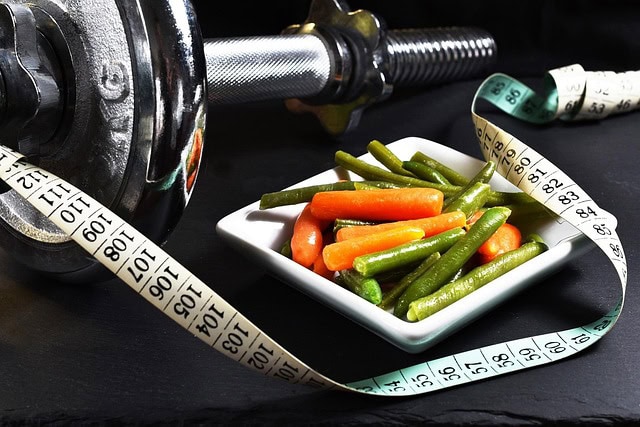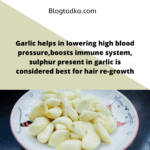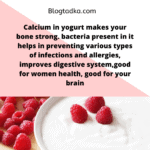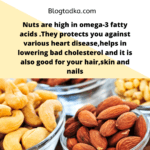-By: Bhavisha Changrani
The mobility and quality of life of an individual can be greatly impacted by orthopedic problems such as osteoporosis, fractures, soft tissue injuries, and arthritis. Although medical interventions like physical therapy, medicine, and surgery are essential for healing, nutrition is just as crucial for reducing orthopedic disorders and speeding up the healing process. Orthopedic patients can promote bone health, enhance joint function, lower inflammation, and speed up their recovery by concentrating on the correct foods.
This article offers a thorough examination of food sources that support musculoskeletal health and examines the vital nutrients orthopedic patients should emphasize in their diet.
Vital Components for Orthopedic Wellbeing
Certain nutrients are essential for maintaining bone strength, lowering inflammation, promoting tissue healing, and enhancing muscular performance in order to maintain good muscle health.
The Building Block of Bone Health: Calcium
Establishing and maintaining healthy bones requires calcium, which is also vital for bone healing, particularly for individuals recovering from fractures.Calcium deficiency may weaken bones and increase the chance of fractures
Calcium-containing foods:
Dairy items: Milk, yogurt, and cheese.
Leafy greens: kale, turnip greens, collard greens, and bok choy , arugula
Plant-based milks with added nutrients: oat milk, soy milk, and almond milk
– Tempeh and tofu: Particularly those prepared with calcium sulfate
Fish: salmon (with bones) and sardines
Cereals fortified with nutrients: A lot of morning cereals have calcium added to them.
Sesame seeds and almonds: Small portions of a rich calcium source
Vitamin D: Improving the Absorption of Calcium
For calcium to be properly absorbed from the intestines into the bloodstream, vitamin D is necessary. The body cannot use calcium properly without enough vitamin D, which results in weakening bones and a decline of bone density.
Foods High in Vitamin D:
– Fish high in fat: tuna, sardines, mackerel, and salmon
Egg yolks: An organic way to get vitamin D
Magnesium: Supporting Bone Formation and Muscle Function
Magnesium aids in regulating calcium levels and supporting the structural integrity of bones. It also plays a vital role in muscle function, which is particularly important for patients recovering from musculoskeletal injuries or surgeries.
Food Sources of Magnesium:
-Nuts and seeds: Pumpkin seeds, sunflower seeds cashews, Almonds
– Whole grains: Barley, quinoa, brown rice buckwheat, oats
– Leafy greens: kale, Swiss chard, spinach
– Legumes: black beans, lentils, chickpeas, kidney beans
– Avocados: High in both magnesium and healthy fats
– Bananas: A great portable source of magnesium
Vitamin K: Strengthening Bone Matrix
Vitamin K plays a critical role in bone metabolism by supporting the formation of osteocalcin, a protein involved in bone mineralization. It helps regulate calcium and promotes proper bone density, which is especially beneficial for patients with osteoporosis.
Food Sources of Vitamin K:
– Leafy greens: Collard greens ,mustard greens spinach, Swiss chard, kale,
– Cruciferous vegetables: Broccoli, Brussels sprouts, cabbage
– Fish: Salmon, mackerel, and tuna
-Natto: A fermented soybean dish, extremely high in vitamin K2
– Egg yolks: An excellent source of vitamins
Collagen and Protein: Healing and Repair
Collagen, the main structural protein in bones, tendons, ligaments, and skin, is essential for tissue repair, especially after fractures or orthopedic surgery. Protein is also important for overall muscle strength and recovery.
Food Sources of Collagen and Protein:
– Bone broth: high in collagen, made by simmering animal bones for a longer period.
– Chicken and turkey: Particularly the skin, which is rich in collagen.
– Fish: Salmon, cod, and other fish with skin contain collagen.
– Gelatin: Made from animal collagen, it can be added to foods or drinks.
– Eggs: Whole eggs, particularly the whites, provide a high-quality source of protein.
– Lean meats: Beef, pork, and lamb (especially grass-fed)
– Legumes: Lentils, chickpeas, black beans, and soybeans are plant-based protein options.
Omega-3 Fatty Acids: Reducing Inflammation
Omega-3 fatty acids have powerful anti-inflammatory effects, which can help reduce joint pain and stiffness, especially in conditions like arthritis. Reducing inflammation can also speed up recovery from surgery or injury.
Food Sources of Omega-3 Fatty Acids:
– Fatty fish: Salmon, mackerel, sardines, herring, and anchovies
– Flaxseeds: Ground flaxseeds or flaxseed oil are great plant-based omega-3 sources
– Chia seeds: Another excellent source of plant-based omega-3s
– Walnuts: Rich in both omega-3s and antioxidants
– Hemp seeds: The proportion of omega-3 and omega-6 fatty acids in hemp seeds is equal
– Algal oil: A plant-based omega-3 supplement, ideal for vegetarians and vegans
Vitamin C: Collagen Production and Tissue Repair
Vitamin C is vital for collagen production, which helps repair cartilage, tendons, ligaments, and skin. Additionally, it plays an important role in reducing inflammation and promoting overall healing.
Food Sources of Vitamin C:
-Citrus fruit: Oranges, grapefruits, lemons, limes
– Berries: Strawberries, blueberries, raspberries, blackberries
– Kiwi: A good source of antioxidants and Vitamin C
– Bell peppers: Red and yellow peppers are especially high in vitamin C
– Tomatoes: Another excellent source, especially when eaten raw or in fresh salsas
– Broccoli: High in both fiber and Vitamin C
– Pineapple: Contains vitamin C as well as bromelain, an enzyme that may help reduce inflammation
Zinc: Promoting Healing and Immune Function
Zinc is necessary for healing wounds and cell regeneration. It also plays an important role in maintaining the health of bones and joints, especially during recovery from fractures or surgery.
Food Sources of Zinc:
– Shellfish: Oysters, crab, and lobster are particularly rich in zinc
– Meat: Beef, lamb, and pork
– Legumes: Lentils, chickpeas, and beans (especially kidney beans and chickpeas)
– Nuts and seeds: Pumpkin seeds, sesame seeds, cashews, and almonds
– Dairy: Cheese, milk, and yogurt
– Whole grains: Quinoa, oats, and whole wheat bread
– Dark chocolate: A good source of zinc in moderation
Anti-Inflammatory Foods for Joint Health
For those suffering from conditions like arthritis or other inflammatory joint diseases, a diet rich in anti-inflammatory foods can be beneficial. These foods help reduce swelling, pain, and stiffness, promoting better mobility.
Anti-inflammatory Foods to Include:
– Turmeric: Contains curcumin, a powerful anti-inflammatory compound
– Ginger: Natural compounds in ginger, like gingerol, reduce inflammation and pain
– Olive oil: Rich in monounsaturated fats and antioxidants that reduce inflammation
– Green tea: Contains polyphenols, which help reduce inflammation
– Berries Blueberries, strawberries, and raspberries are rich in antioxidants that fight inflammation
Hydration for Joint Lubrication
Adequate hydration is essential for joint health. Water helps maintain the synovial fluid that lubricates joints and reduces friction between cartilage surfaces. Dehydration can lead to joint stiffness and pain, so it is crucial for orthopedic patients to stay hydrated.
Hydrating Foods:
– Cucumbers: High water content, great for hydration
– Watermelon: 92% water and packed with vitamins A, C, and B6
– Celery: Another water-rich vegetable that aids in hydration
– Citrus fruits: Oranges, grapefruits, and lemons are excellent sources of water and vitamin C
– Tomatoes: High in water and vitamin C, great for hydration
Conclusion
A balanced diet that includes the right nutrients is essential for orthopedic patients, whether they are recovering from surgery, dealing with arthritis, or managing other musculoskeletal conditions. By focusing on foods rich in calcium, vitamin D, magnesium, collagen, omega-3s, and other essential
nutrients, patients can promote bone health, reduce inflammation, and speed up recovery. A personalized dietary plan that incorporates these foods, combined with physical activity and medical care, can significantly improve the overall health and quality of life of orthopedic patients.
Before making significant dietary changes, it is always advisable to consult with a healthcare provider or nutritionist to create a tailored plan based on specific needs.













